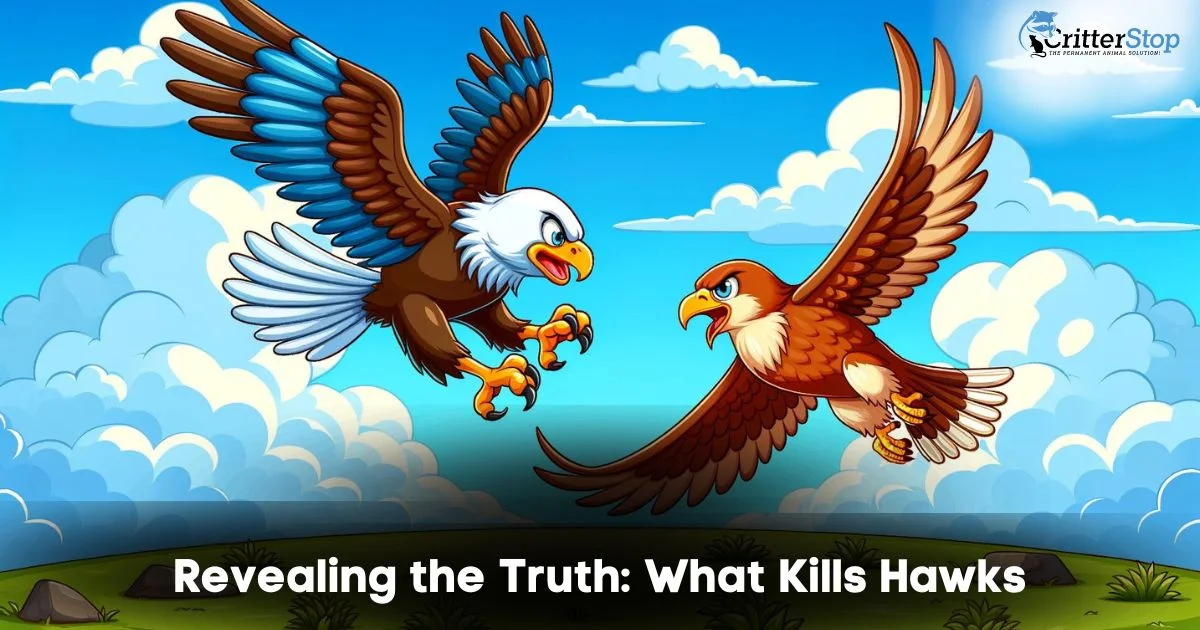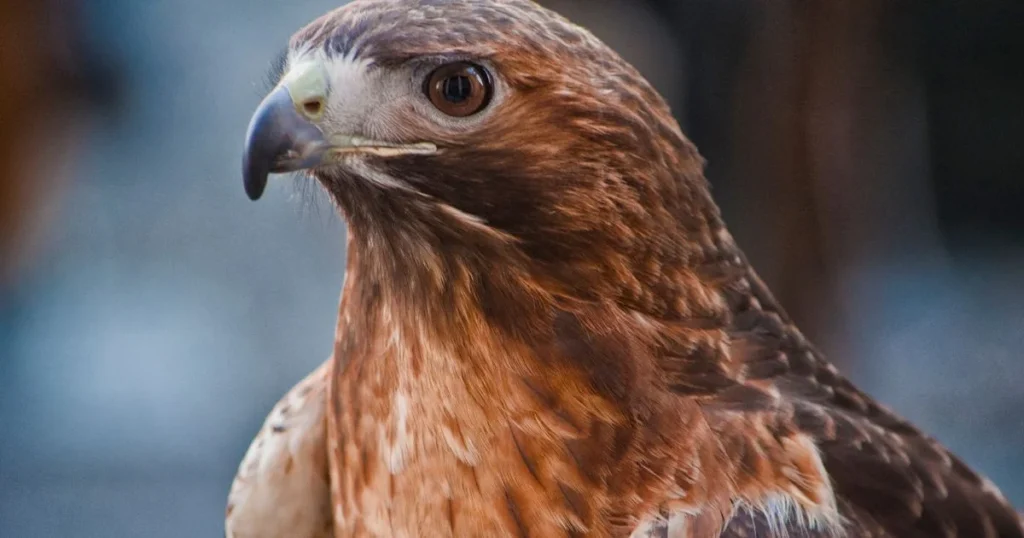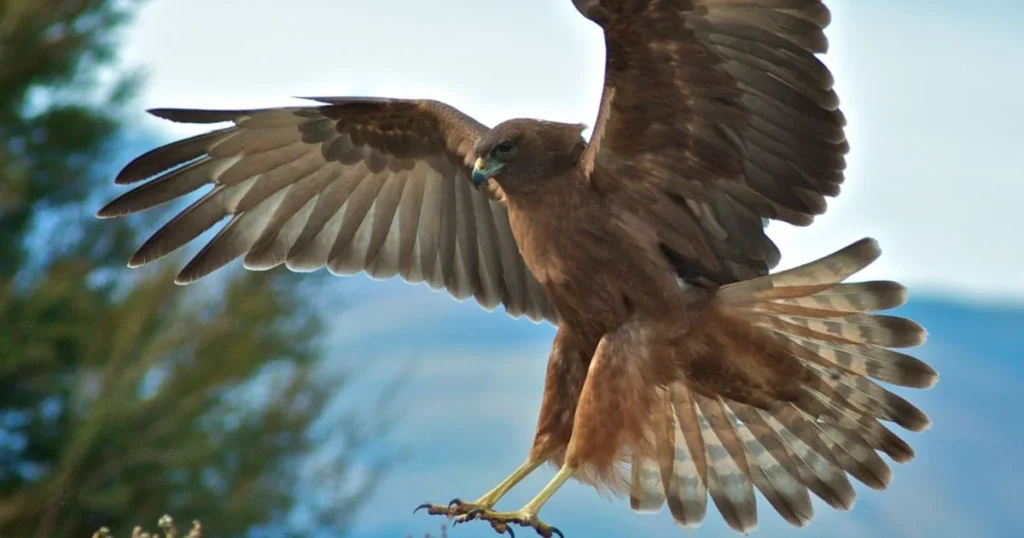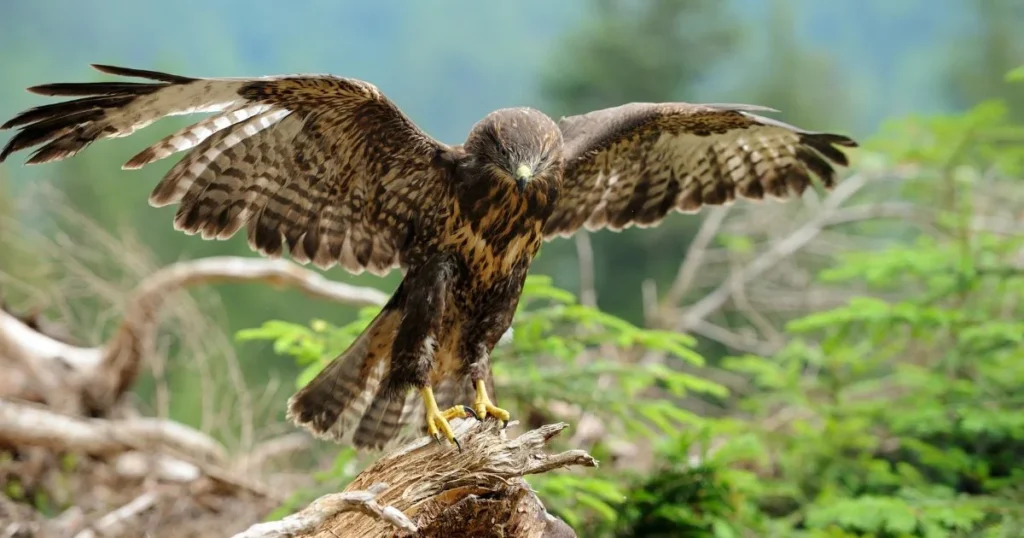
Hawks, majestic birds of prey, are integral parts of ecosystems around the world. However, despite their remarkable prowess and adaptability, these magnificent creatures face numerous threats that endanger their populations. In this comprehensive guide, we delve into the various factors that can explain what kills hawks and explore how we can mitigate these threats to ensure their survival.
In urban and suburban areas, hawks often encounter challenges stemming from human activities and developments. The expansion of cities and infrastructure leads to habitat loss and fragmentation, forcing hawks to navigate through increasingly unfamiliar territories. Moreover, collisions with buildings and vehicles pose significant dangers to these birds, resulting in injuries and fatalities.
As a pest control company deeply committed to environmental conservation, Critter Stop recognizes the importance of preserving habitats and minimizing human impacts on wildlife. We advocate for responsible urban planning and infrastructure development that considers the needs of all species, including hawks. Through education, outreach, and strategic partnerships, we strive to create safer environments for these majestic birds, ensuring their continued presence in our ecosystems.

One of the primary threats facing hawks is habitat loss and degradation. As human populations expand and urbanization encroaches upon natural habitats, the available nesting sites and hunting grounds for hawks diminish. Deforestation, agricultural expansion, and infrastructure development further fragment and destroy their habitats, leaving hawks with limited resources to sustain themselves.
Climate change exacerbates the challenges hawks already face due to habitat loss and degradation. Shifts in temperature and precipitation patterns alter the availability of prey species and disrupt the delicate balance of ecosystems. Additionally, extreme weather events, such as hurricanes and wildfires, can devastate habitats and directly impact hawk populations. Rising sea levels also threaten coastal habitats where some species of hawks reside, further reducing their available habitat.
Poaching and illegal wildlife trade also pose significant threats to hawk populations. Despite legal protections in many countries, hawks are often targeted for their feathers, talons, and other body parts, which are used in traditional medicine, ceremonial rituals, and decorative items. The demand for these products drives illegal hunting and trapping of hawks, leading to population declines and disrupting ecosystems.
The detrimental effects of poaching and illegal wildlife trade extend beyond the direct impact on hawk populations. These illegal activities also contribute to the destabilization of ecosystems and the loss of biodiversity. When hawks are unlawfully removed from their natural habitats, it disrupts predator-prey dynamics and can lead to imbalances within ecosystems. Additionally, the decline in hawk populations can have cascading effects on other species, potentially resulting in negative consequences for entire food webs.

The use of pesticides and other chemical contaminants in agriculture and pest control is another major threat to hawks. These toxic substances accumulate in the environment and prey species, leading to bioaccumulation in hawks at the top of the food chain. Pesticides such as organophosphates and carbamates can directly poison hawks or weaken their immune systems, making them more susceptible to diseases and reproductive problems.
Furthermore, the widespread use of pesticides and chemical contaminants poses a significant risk to hawk populations. These toxic substances not only directly harm hawks but also have far-reaching consequences throughout the ecosystem. Pesticides and chemical contaminants can contaminate water sources, soil, and vegetation, affecting the entire food web upon which hawks rely. Moreover, these chemicals can persist in the environment for extended periods, continuing to pose a threat to hawks and other wildlife long after their initial application.

As human activities continue to encroach upon natural habitats, hawks increasingly face the risk of collisions with human structures such as buildings, power lines, and wind turbines. These collisions can result in serious injuries or fatalities for hawks, further reducing their already vulnerable populations. Additionally, artificial lighting in urban areas can disorient hawks and interfere with their hunting and navigation abilities.
Also, the proliferation of communication towers poses a significant threat to hawk populations. These tall structures, often equipped with guy wires and antennas, present obstacles that hawks may not easily detect while in flight. Collisions with communication towers can result in fatal injuries to hawks, impacting their ability to survive and reproduce. Furthermore, the presence of these structures can disrupt nesting and foraging behaviors, leading to long-term consequences for hawk populations. Efforts to mitigate the risk of collisions with communication towers, such as implementing bird-friendly designs and minimizing the use of guy wires, are crucial to ensuring the safety and conservation of hawks in human-dominated landscapes.

Hawks generally do not pose a significant threat to humans and typically avoid interactions with people. However, there are rare instances where hawks may exhibit defensive behaviors if they feel threatened or cornered, particularly during nesting season when they are protecting their young. In such cases, hawks may dive or swoop at perceived threats, including humans, as a means of defending their territory or offspring. These defensive displays are usually intended to deter potential threats rather than to cause harm.
It's essential to note that aggressive encounters between hawks and humans are exceedingly rare, and hawks do not view humans as prey. Most hawks prefer to avoid human contact altogether and will flee if approached. To minimize the likelihood of conflicts with hawks, it's crucial for humans to respect wildlife boundaries, especially during nesting season, and to avoid disturbing hawk nests or nesting areas.
Climate change is exacerbating many of the existing threats to hawks by altering their habitats and prey availability. Shifts in temperature and precipitation patterns can disrupt the breeding and migration patterns of hawks, leading to mismatches with food sources and nesting sites. Extreme weather events such as storms and wildfires can also directly impact hawk populations by destroying habitats and reducing prey abundance.
The introduction of invasive species can also pose a threat to hawks by competing for resources and preying on native species. Invasive predators such as feral cats and raccoons can target hawk nests and eggs, reducing reproductive success rates. Additionally, invasive plants can alter habitats and food availability for hawks, further exacerbating their vulnerability to other threats.
Several predators may target hawks as prey, particularly when they are young or vulnerable. Larger birds of prey, such as eagles and owls, are known to occasionally prey on hawks, especially smaller species or fledglings. Additionally, mammals such as foxes, raccoons, and even larger snakes may pose a threat to hawk nests or individuals. In some cases, domestic pets like cats may also prey on hawks, especially if they are injured or weakened.

To safeguard hawks and ensure their continued presence in our ecosystems, concerted efforts are needed to address the various threats they face. Conservation measures should focus on habitat preservation and restoration, as well as the enforcement of laws and regulations to combat poaching and illegal wildlife trade. Additionally, sustainable agricultural practices that minimize pesticide use and promote coexistence with wildlife can help mitigate the impacts of chemical contamination on hawk populations.
Public education and awareness campaigns can play a vital role in fostering appreciation for hawks and promoting coexistence with these magnificent birds. By raising awareness about the importance of conserving hawk populations and the threats they face, we can inspire individuals and communities to take action to protect these iconic species for future generations.
In conclusion, while hawks face numerous threats in today's rapidly changing world, concerted conservation efforts and proactive measures can help mitigate these challenges and ensure their survival. By addressing habitat loss, poaching, pesticide contamination, collisions with human structures, climate change, and invasive species, we can work towards creating a more sustainable future where hawks thrive in their natural environments.
If you are a wildlife lover, go to check out our Blog! At Critter Stop, we are creating a lot of articles with the most incredible facts about our animals! Raccoons, Spiders, Squirrels... we got everything! Take a look and tell us which one was your favorite article.
Hawks typically hunt by employing their sharp talons to grasp and immobilize their prey mid-flight or while perched. With exceptional speed and agility, they swoop down on unsuspecting prey, using their powerful feet to deliver a swift and precise strike. Their keen eyesight allows them to spot prey from great distances, enabling them to execute precise attacks. Once caught, hawks may use their sharp beaks to deliver a fatal blow to their prey before consuming it whole or tearing it apart for consumption, this is how does a hawk kill its prey.
Several predators may target hawks as prey, particularly when they are young or vulnerable. Larger birds of prey, such as eagles and owls, are known to occasionally prey on hawks, especially smaller species or fledglings. Additionally, mammals such as foxes, raccoons, and even larger snakes may pose a threat to hawk nests or individuals. In some cases, domestic pets like cats may also prey on hawks, especially if they are injured or weakened.
Hawks typically do not eat their prey alive. Once a hawk captures its prey, it will use its sharp beak and talons to deliver a swift and fatal blow, immobilizing the prey before consuming it. This ensures that the prey is quickly dispatched, minimizing suffering and facilitating easier consumption for the hawk.
Do hawks eat scorpions?
While hawks are primarily carnivorous and feed on a variety of small mammals, birds, reptiles, and insects, they generally do not include scorpions in their diet. Scorpions are not typically a preferred prey item for hawks due to their defensive capabilities, such as their venomous sting. Hawks tend to target prey that is easier to catch and consume without risking injury from defensive mechanisms like the scorpion's sting.
They do not typically prey on beavers. Beavers are large rodents known for their aquatic habitats and formidable size. Hawks generally target smaller prey that they can more easily capture and consume, such as mice, rabbits, squirrels, and birds. Beavers are also highly adapted for life in water and possess powerful jaws and sharp teeth, making them less vulnerable to predation by hawks.
Visit our Critter Library and learn more about our furry friends